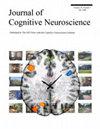The Development of Socially Directed Attention: A Functional Magnetic Resonance Imaging Study in Infant Monkeys
IF 3.1
3区 医学
Q2 NEUROSCIENCES
引用次数: 0
Abstract
Socially guided visual attention, such as gaze following and joint attention, represents the building block of higher-level social cognition in primates, although their neurodevelopmental processes are still poorly understood. Atypical development of these social skills has served as early marker of autism spectrum disorder and Williams syndrome. In this study, we trace the developmental trajectories of four neural networks underlying visual and attentional social engagement in the translational rhesus monkey model. Resting-state fMRI (rs-fMRI) data and gaze following skills were collected in infant rhesus macaques from birth through 6 months of age. Developmental trajectories from subjects with both resting-state fMRI and eye-tracking data were used to explore brain–behavior relationships. Our findings indicate robust increases in functional connectivity (FC) between primary visual areas (primary visual cortex [V1] – extrastriate area 3 [V3] and V3 – middle temporal area [MT], MT and anterior superior temporal sulcus area [AST], as well as between anterior temporal area [TE]) and amygdala (AMY) as infants mature. Significant FC decreases were found in more rostral areas of the pathways, such as between temporal area occipital part – TE in the ventral object pathway, V3 – lateral intraparietal (LIP) of the dorsal visual attention pathway and V3 – temporo-parietal area of the ventral attention pathway. No changes in FC were found between cortical areas LIP-FEF and temporo-parietal area – Area 12 of the dorsal and ventral attention pathways or between Anterior Superior Temporal sulcus area (AST)-AMY and AMY-insula. Developmental trajectory of gaze following revealed a period of dynamic changes with gradual increases from 1 to 2 months, followed by slight decreases from 3 to 6 months. Exploratory association findings across the 6-month period showed that infants with higher gaze following had lower FC between primary visual areas V1–V3, but higher FC in the dorsal attention areas V3-LIP, both in the right hemisphere. Together, the first 6 months of life in rhesus macaques represent a critical period for the emergence of gaze following skills associated with maturational changes in FC of socially guided attention pathways.社会定向注意力的发展:婴猴的功能磁共振成像研究
社会引导的视觉注意力(如注视跟随和联合注意力)是灵长类动物高级社会认知的基础,但人们对其神经发育过程仍知之甚少。这些社交技能的非典型发展是自闭症谱系障碍和威廉姆斯综合征的早期标志。在这项研究中,我们追踪了转化恒河猴模型中视觉和注意社交参与所依赖的四个神经网络的发育轨迹。我们收集了婴儿猕猴从出生到6个月大期间的静息态fMRI(rs-fMRI)数据和注视跟随技能。我们利用同时获得静息态 fMRI 和眼动追踪数据的受试者的发育轨迹来探讨大脑与行为之间的关系。我们的研究结果表明,随着婴儿发育成熟,初级视觉区域(初级视觉皮层 [V1] - 第 3 眼外区 [V3] 和第 3 眼外区 - 中颞区,腹侧运动区 - 中颞区 - AST)之间以及 TE 和杏仁核 (AMY) 之间的功能连通性(FC)显著增加。在通路的较前部区域,如腹侧物体通路的颞区枕部 - TE、背侧视觉注意通路的 V3 - 侧顶叶内(LIP)以及腹侧注意通路的 V3 - 颞顶叶区域,发现 FC 显著下降。在背侧和腹侧注意通路的皮层区域 LIP-FEF 和颞顶区 - 第 12 区之间,以及在 AST-AMY 和 AMY-insula 之间,均未发现 FC 的变化。注视跟踪的发展轨迹显示了一个动态变化时期,从 1 个月到 2 个月逐渐增加,随后从 3 个月到 6 个月略有减少。6个月期间的探索性联想结果显示,注视追随率越高的婴儿,其初级视觉区域V1-V3之间的FC越低,但背侧注意力区域V3-LIP的FC越高,两者均位于右半球。总之,猕猴出生后的头6个月是其目光追随技能出现的关键时期,与社会引导的注意力通路FC的成熟变化有关。
本文章由计算机程序翻译,如有差异,请以英文原文为准。
求助全文
约1分钟内获得全文
求助全文
来源期刊
CiteScore
5.30
自引率
3.10%
发文量
151
审稿时长
3-8 weeks
期刊介绍:
Journal of Cognitive Neuroscience investigates brain–behavior interaction and promotes lively interchange among the mind sciences.

 求助内容:
求助内容: 应助结果提醒方式:
应助结果提醒方式:


